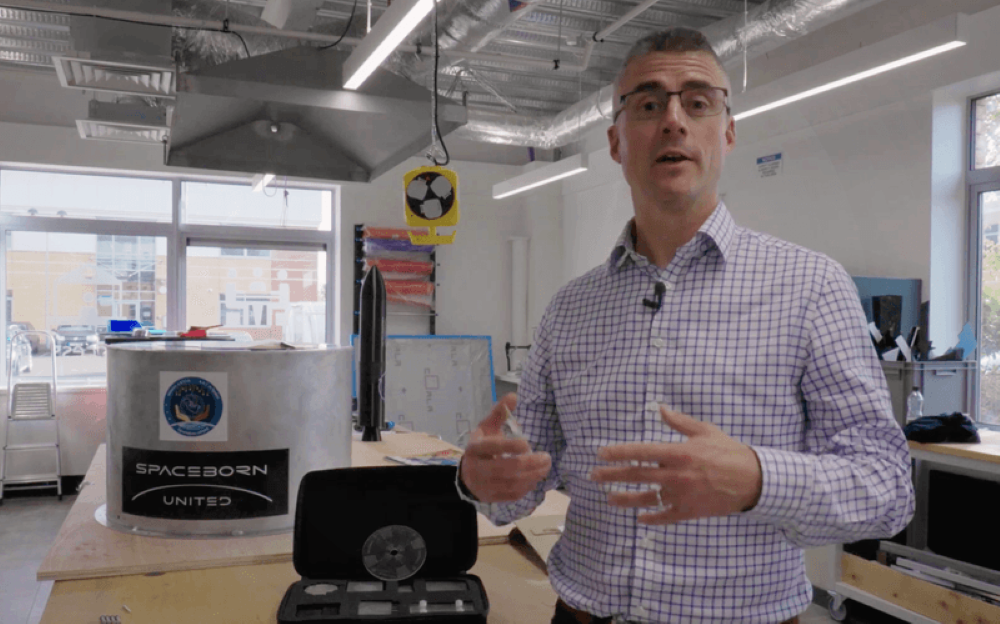Managing Cosmic Uncertainty Spaceborn Backup Systems
The idea of a backup plan for humanity is highly relevant in this turbulent time of climate crises, nuclear dangers, and the looming threat of cosmic disasters. Egbert Edelbroek, a visionary Dutch entrepreneur, asserts that understanding the complexities of safe space reproduction is not only a scientific endeavor but also a critical necessity for humanity to evolve beyond Earthly bounds and become a multi-planetary species within this cosmic uncertainty.
The Pioneers Space-born United and Egbert Edelbrock
Space-born United, the brainchild of Egbert Edelbroek, is leading this intergalactic frontier. Not content to chase after the stars, this trailblazing endeavor is leading the way in space reproductive sciences research, with the bold objective of enabling natural conception and childbirth in the unique partial gravity environment of Mars.
Faced with Gravity The Difficulty of Space Reproduction
Acknowledging the necessity of creating self-sufficient human communities outside of Earth, Edelbrock stresses how critical it is to address the reproductive dilemma. The idea of engaging in sexual activity in space has significant challenges, chief among them being the lack of gravity, which may cause people to drift apart, literally and figuratively.
Starting the Adventure Establishing a Cellular Space Station
Unfazed by these astronomical obstacles, Space-born United sets out on its quest with the goal of creating an embryo in orbit. Starting with mouse and moving on to human sperm and egg cells, the business creates a cutting-edge disc that combines these cells in an attempt to create a viable embryo—a concept that’s been appropriately named a “cellular space station,” according to Aqeel Shamsul, CEO of Frontier Space Technologies, a UK-based partner on the project.
The Cryogenic Odyssey Preserving Humanity’s Future

When the resulting embryo is cryogenically frozen to stop its development and protect it for re-entry, the journey takes an odd turn. With its extreme shaking, vibration, and G-forces, this cryogenic technique is a groundbreaking move into unexplored areas. With a timeframe of “about five or six years” for the first launch involving a human embryo, Edelbrock lays out ambitious plans, predicting a launch involving mouse cells by the end of next year.
Crossroads of Ethics: Handling the Debates
Nevertheless, there are moral conundrums in the quest for space reproduction. Edelbrock recognizes the delicate nature of subjecting human cells and embryos to space dangers, such as elevated radiation exposure and unaccustomed gravity settings. Probing scientific limits while preserving the sanctity of life is a complex ethical dance that raises important issues that go beyond the lab and into the philosophical domain of human duty beyond Earth.
Space-born Contribution to Private Pioneering in Reproductive Research
Due to these moral reservations, government space agencies like NASA have refrained from sponsoring these kinds of projects; instead, private companies like Space-born are taking the lead in space exploration. Edelbrock highlights the delicate nature of the topic, especially when considering the reimplantation of an embryo created in space into an Earthbound woman. This is an exploration of the moral complexities of human duty in the face of rapid technological advancement as well as the heavenly unknown.
Getting Around the Universe Risks to Reproduction and Space Travel
With the growth of space tourism and the involvement of SpaceX and Virgin Galactic, Edelbrock warns against the hazards that couples on space tourism flights who want to become the first to conceive may face. In partnership with the rapidly expanding space tourism industry, Space-born seeks to increase public understanding of the unique difficulties involved with space reproduction. Exploration and commerce collide in a way that has the potential to completely reshape not only space travel but also the entire fabric of human life.
Reducing: Obstacles and Unwavering Faith
Edelbrock is honest enough to acknowledge that his initial goals were scaled back due to massive cosmic hurdles. The scale of the ethical, scientific, and practical obstacles requires a reevaluation of what is possible. Still, he is unwavering in his confidence that humanity will eventually succeed in childbearing beyond Earth. He states, “Eventually, humanity—hopefully with us—needs to achieve childbirth in space,” highlighting the far-reaching goals of Space-born United’s innovative endeavors.
Read More Articles: Exposed! International Space Station Tests Organisms Materials in Space
Conclusion
Space-born United is on the verge of reinventing the possibilities of human existence, not only as a result of its revolutionary research into space reproduction but also thanks to the unwavering leadership of Egbert Edelbrock. The ultimate goal is to make it possible for a child to conceive and be born naturally on Mars, given its special gravitational environment. The problems are not only vast but also cosmic in scope, pushing the boundaries of science and technology as well as the tenacity of the human spirit.
